These are arranged according to there timeline, generation staring from 1 to 5
1 2 3 4 5 Next>>
Invention of Origami DVD Player
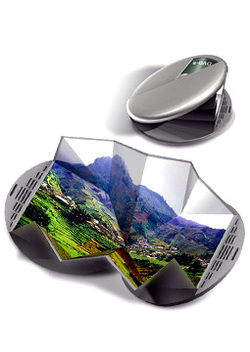
The printed electronics market has seen exponential growth. By now, it has ballooned to over $300 billion globally - even overtaking the silicon integrated circuit industry.
This technology began with a small number of niche, high-end products. It expanded rapidly in the 2010s, thanks to plummeting costs and improved production methods. By the 2020s it had exploded into the mainstream – creating a whole new generation of ultra-thin electronics.
Today, these have such low fabrication costs that they are ubiquitous, being present in countless everyday business and consumer applications. Many previously bulky and heavy devices can now be folded, stored or carried as easily as sheets of paper. This includes flexible TV displays that can be rolled or hung like posters, wearable mobile phones, electronic newspapers with moving pictures, disposable netbooks, "smart" packaging and labels with animated text, signage in retail outlets that can be updated shop-wide at the touch of a button.
Multimedia players with expandable, fold-out touchscreens are especially popular. Even low-end models are now the size and weight of credit cards and can easily fit inside a wallet. With petabytes of storage, gigapixels of screen resolution and superfast transfer speeds, they are millions of times more powerful than iPods of previous decades. They are also completely wireless - no cables or physical connections of any kind are required, and music can be enjoyed using wireless earphones.
This technology began with a small number of niche, high-end products. It expanded rapidly in the 2010s, thanks to plummeting costs and improved production methods. By the 2020s it had exploded into the mainstream – creating a whole new generation of ultra-thin electronics.
Today, these have such low fabrication costs that they are ubiquitous, being present in countless everyday business and consumer applications. Many previously bulky and heavy devices can now be folded, stored or carried as easily as sheets of paper. This includes flexible TV displays that can be rolled or hung like posters, wearable mobile phones, electronic newspapers with moving pictures, disposable netbooks, "smart" packaging and labels with animated text, signage in retail outlets that can be updated shop-wide at the touch of a button.
Multimedia players with expandable, fold-out touchscreens are especially popular. Even low-end models are now the size and weight of credit cards and can easily fit inside a wallet. With petabytes of storage, gigapixels of screen resolution and superfast transfer speeds, they are millions of times more powerful than iPods of previous decades. They are also completely wireless - no cables or physical connections of any kind are required, and music can be enjoyed using wireless earphones.
Invention of Self Cooling Beer Can
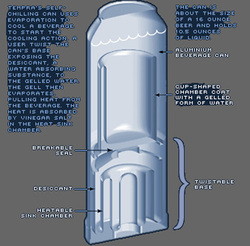
Tempra Technology and Crown Holdings have partnered to develop the world's first self cooling beer can. It looks like a normal 500ml can, but features an integrated self-cooling device that reduces the "contents by a minimum of 30° Fahrenheit (16.7° C) in just three minutes."
Invention of EyeMove PC

The EyeMove PC combines the functionality of a digital projector and computer into one circular-shaped device. Simply hang it on your wall or place it flat on a desk and project games, movies, or applications. No word yet on on if this concept will go into production.
Completion of the International Space Station
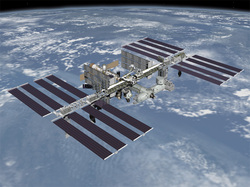
This is by far the largest man-made structure ever put into orbit - measuring 110m wide, with a mass of 345,000 kg and a living volume of 1000 cubic metres. The primary fields of research on board the station include human research, space medicine, life sciences, physical sciences, astronomy and meteorology. It will remain in operation until 2028.
Windows 8 is released
Windows 8 features a much faster startup, an App Store, integrated web applications, improved digital media support (including AVC HD and 3D video), faster resumes from low-power states, and support for both USB 3.0 and Bluetooth 3.0. It also includes facial recognition (due to the increasing use of webcams integrated into computers), which can log a user in automatically. There are major improvements for touch usage.
The first hotel in space
Energiya - a Russian space group - launches the world's first space hotel, in a partnership with Orbital Technologies, a US hi-tech firm. Capable of housing up to seven people, it offers spectacular views of the Earth and includes a menu crafted by celebrity chefs. It can also function as a possible emergency refuge for astronauts from the ISS.
Holographic Versatile Disc (HVD) replaces Blu-Ray

These ultra-high density discs are capable of holding 1Tb of data - equivalent to over 200 DVDs. They work by analysing micro-holograms in 3D, rather than just markings on the surface. This allows data to be far more densely packed than conventional optical technology.
The price of storage per gigabyte is plummeting - from around $1 per gigabyte in 2006, to less than 10 cents now. This is an example of the trend of exponential progress (rather than linear) seen in forms of information technology.
HVD itself is in danger of becoming obsolete, before it has even been properly established. Solid state flash drives are increasingly being used for digital transfer, some with even higher capacities, along with read and write speeds faster than any optical disc. The new SDXC card format specification has already reached the 2TB mark.
The price of storage per gigabyte is plummeting - from around $1 per gigabyte in 2006, to less than 10 cents now. This is an example of the trend of exponential progress (rather than linear) seen in forms of information technology.
HVD itself is in danger of becoming obsolete, before it has even been properly established. Solid state flash drives are increasingly being used for digital transfer, some with even higher capacities, along with read and write speeds faster than any optical disc. The new SDXC card format specification has already reached the 2TB mark.
Total solar eclipse in the USA
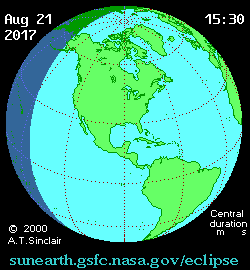
On August 21st of this year, a total eclipse occurs in the United States - the first visible from the US since 1991 (just from part of Hawaii), and the first visible from the contiguous US since 1979.
Totality occurs along a path curving from Oregon to South Carolina, and lasts for roughly 2 minutes and 40 seconds. The location and time of "greatest eclipse" is on the western edge of Christian County, Kentucky at 36.97 degrees North and 87.65 degrees West, occurring at 18:25 UTC.
Totality occurs along a path curving from Oregon to South Carolina, and lasts for roughly 2 minutes and 40 seconds. The location and time of "greatest eclipse" is on the western edge of Christian County, Kentucky at 36.97 degrees North and 87.65 degrees West, occurring at 18:25 UTC.
Teleportation of simple molecules

For a number of years, scientists had been teleporting individual atoms and particles of light. By this date, the first molecules such as water and carbon dioxide are being teleported.* This will be followed in the late 2030s by complex organic molecules such as DNA and proteins.*
The European Extremely Large Telescope is operationa
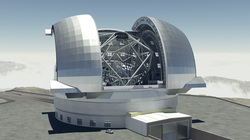
This revolutionary new ground-based telescope has the aim of observing the Universe in greater detail than even the Hubble Space Telescope. A mirror of approximately 42 metres (138 ft) will allow the study of the atmospheres of extrasolar planets. It will also perform "stellar archaeology" - measuring the properties of the first stars and galaxies, as well as probing the nature of dark matter and dark energy.
The James Webb telescope is launched
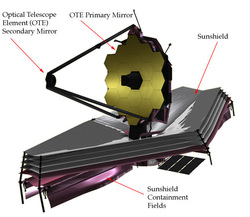
The long-awaited successor to the Hubble Space Telescope is launched. Its primary mirror has a collecting area six times larger than Hubble. The telescope is situated in an L2 orbit approximately 1.5 million kilometres from Earth. Originally planned for 2014, it was delayed until 2018 due to budgetary constraints.
